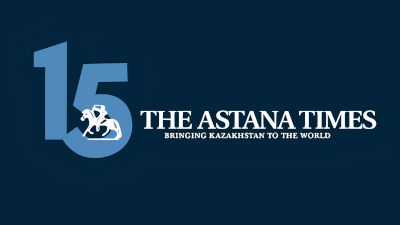ALMATY – The Eurasian Development Bank (EDB) region closed 2024 with record-breaking economic growth exceeding 4%, significantly outpacing the global average of 3.2%. On Dec. 5, EDB analysts presented their macroeconomic forecast for 2025–2027, predicting a moderation of the region’s growth rate to around 3% in 2025.

According to Vinokurov, on average, the Central Asian economy grew by 4.8% annually in 2022–2023, compared to the world average of 3.4%. Photo credit: EDB
This impressive performance follows the publication of the EDB’s report, Central Asian Economy: A New Look, two years ago. The report highlighted remarkable economic progress across the region between 2000 and 2021. EDB Chief Economist Evgeny Vinokurov emphasized the transformative developments during this period.
“The region’s GDP in nominal terms increased sevenfold, and in real terms, fourfold. People became four times richer. Population mobility tripled, and the volume of incoming investments soared by more than 17 times,” said Vinokurov.
He noted that the report aimed to position Central Asia as an economically vibrant and attractive region on the global stage.
“The last two years have confirmed our beliefs,” he added, underscoring the region’s growing potential and resilience.
Central Asia: outpacing global growth
Despite an increasingly complex and challenging global environment, Central Asia has demonstrated resilience. According to Vinokurov, on average, the Central Asian economy grew by 4.8% annually in 2022–2023, compared to the world average of 3.4%. Central Asia has grown 1.4 times faster than the world over the past two years.
He further shared optimistic projections for 2024, with the region’s nominal GDP expected to surpass $500 billion. Central Asia’s population, which has grown by more than 3% over the past two years to reach 80 million, presents a “demographic window of opportunity” that could fuel economic growth for the next 15–20 years.
“The Central Asian economy has become a major player. It is attractive for investment, a dynamic sales market, and strategically significant for transport and transit potential. It is a fast-growing and essential economic region at the heart of Eurasia,” said Vinokurov.
However, despite these strides, Vinokurov acknowledged several challenges hindering further growth. These include the region’s landlocked geography, climate and environmental risks, and the uncoordinated development of water and energy resources.
“All these challenges are best addressed through joint, coordinated efforts by regional states and external partners. By collaborating on water and energy management, developing a unified Eurasian transport framework, and investing in renewable energy, we can achieve cost-effective and efficient solutions,” he said.
Progress in water management and regional cooperation
Over the past year, Central Asian countries have made significant strides in water resource management. For instance, Kazakhstan approved its Concept of the Water Resources Management System until 2030, which includes plans to introduce water-saving irrigation technologies across 150,000 hectares annually. Additionally, a Coordination Council of Partners for the Development of the Water Sector was established to pool resources from governments, international organizations, and donors.
Uzbekistan has also launched projects to save 15 cubic kilometers of water over the next five years, with plans to expand drip irrigation from 75,000 hectares to 600,000 hectares, boosting water efficiency by 25%. Furthermore, Kazakhstan, Kyrgyzstan, and Uzbekistan signed an agreement to construct the Kambar-Ata-1 hydroelectric power station, a cross-border project supported by the World Bank.
Vinokurov expressed optimism that these initiatives, coupled with investments in infrastructure, human capital, and industrial development, could position Central Asia for sustainable long-term growth.
EDB forecasts for Kazakhstan and the global economy
The EDB projects Kazakhstan’s economy to accelerate GDP growth to 5.5% in 2025, supported by stimulus policies, lower interest rates, increased oil production, and infrastructure development initiatives. Inflation in Kazakhstan is expected to decrease from 7.9% in 2024 to 7.3% in 2025, creating opportunities for the National Bank of Kazakhstan to further lower its base rate to 11.25% by the end of 2025.
Globally, the EDB predicts slower average growth for 2025–2027 compared to the 2010s. Key factors include declining productivity growth, labor distribution inefficiencies, and geopolitical fragmentation. The United States GDP is forecast to slow from 2.8% in 2024 to 1.6% in 2025, while the eurozone is expected to recover modestly, with growth increasing from 0.7% in 2024 to 1.1% in 2025. Meanwhile, China’s economy is projected to accelerate to 5% in 2025 due to fiscal stimulus and monetary easing.
Commodity markets are expected to show mixed trends, with oil prices likely to decline due to weak demand, while metal prices may rise, driven by the growth of low-carbon energy projects. After declining in 2023–2024, food prices are anticipated to rebound.


